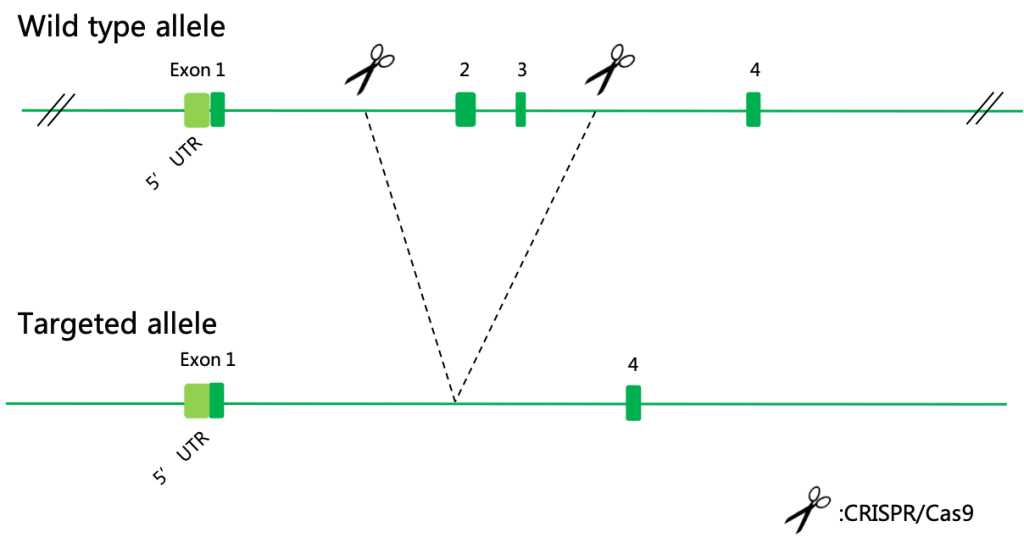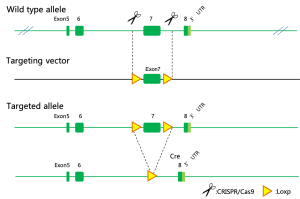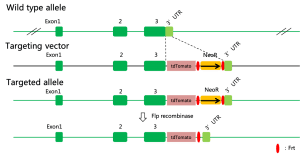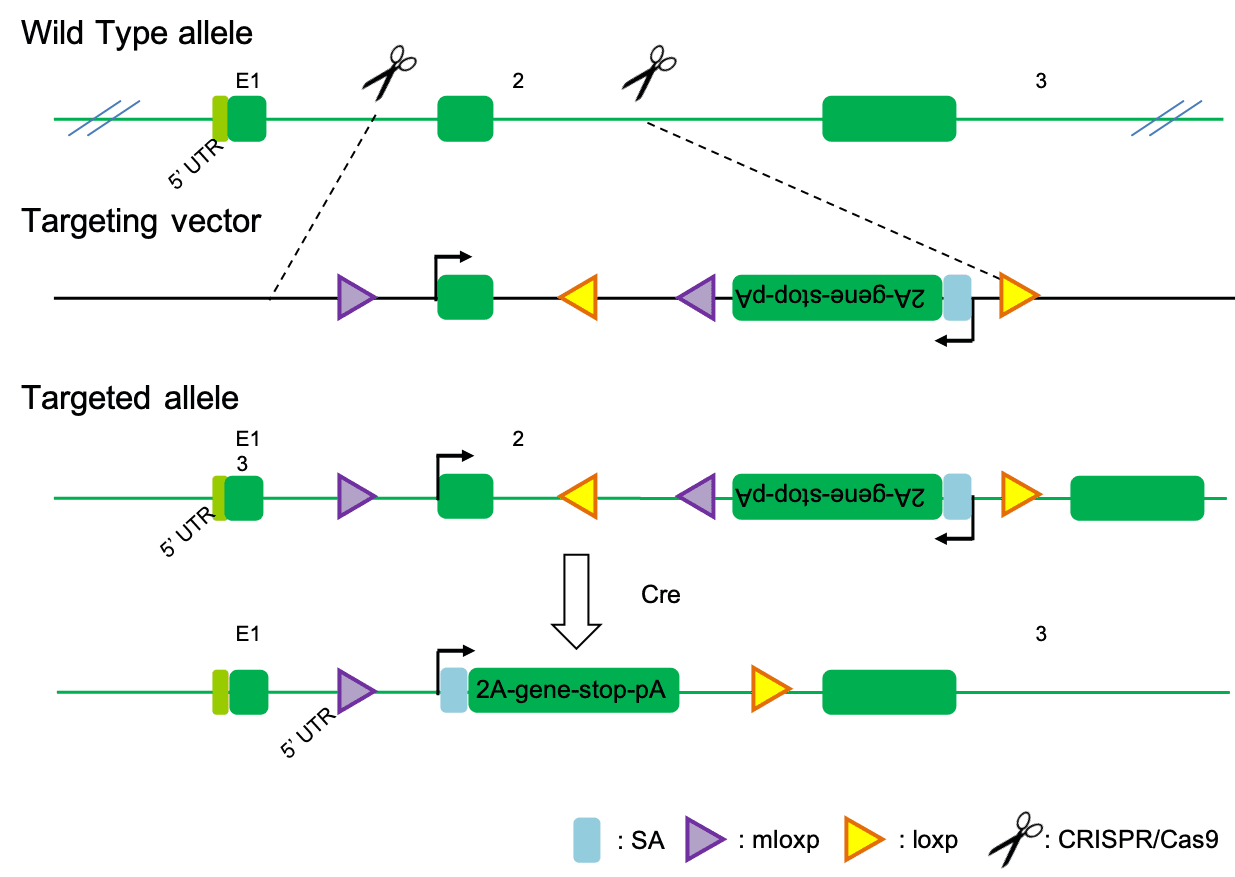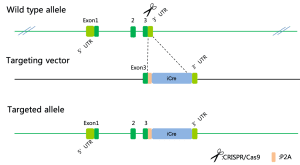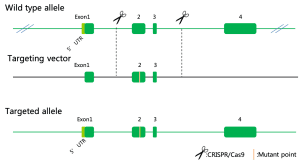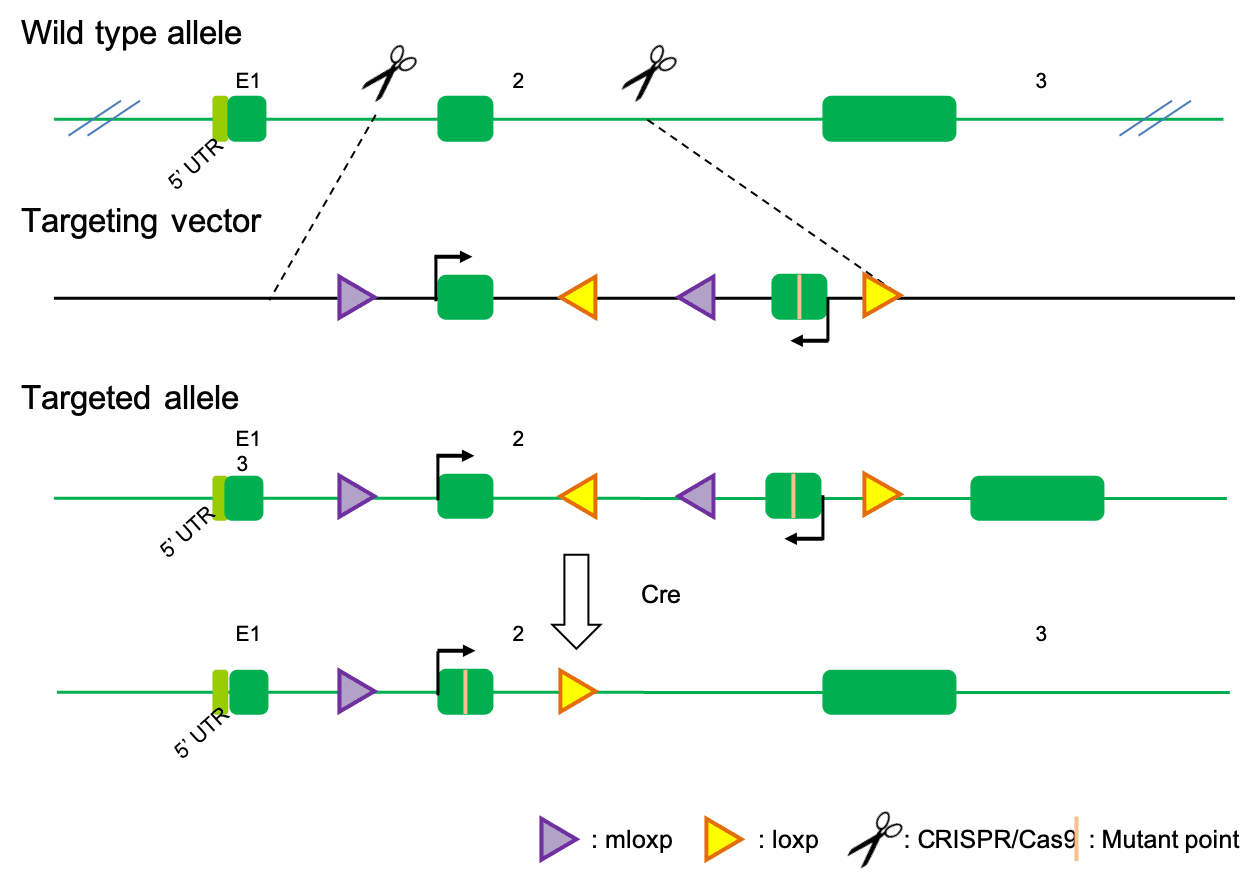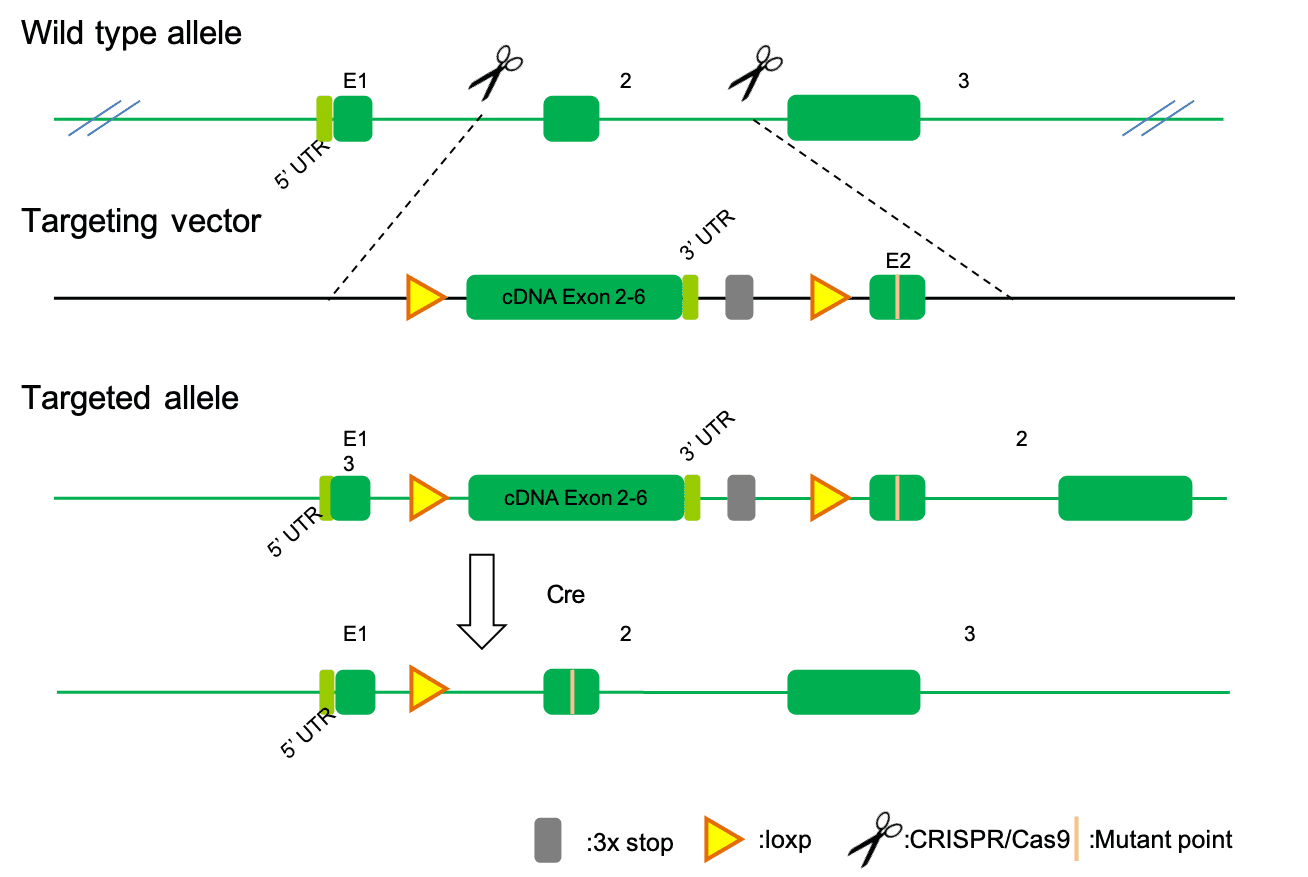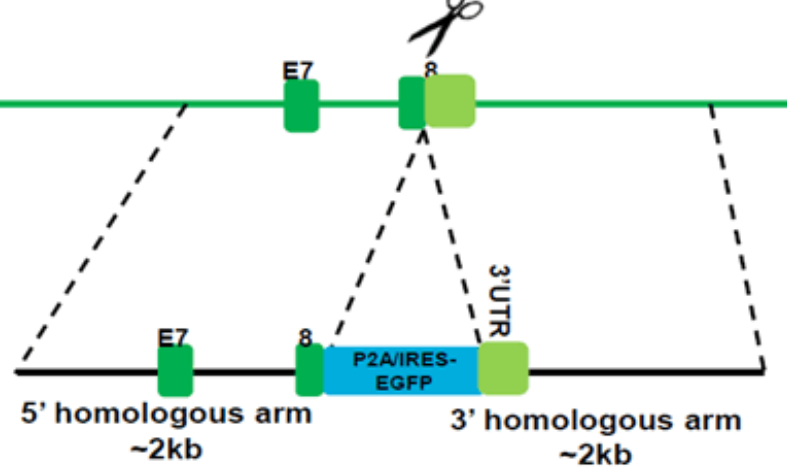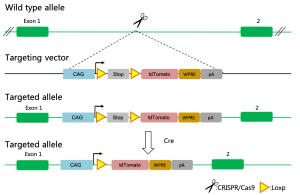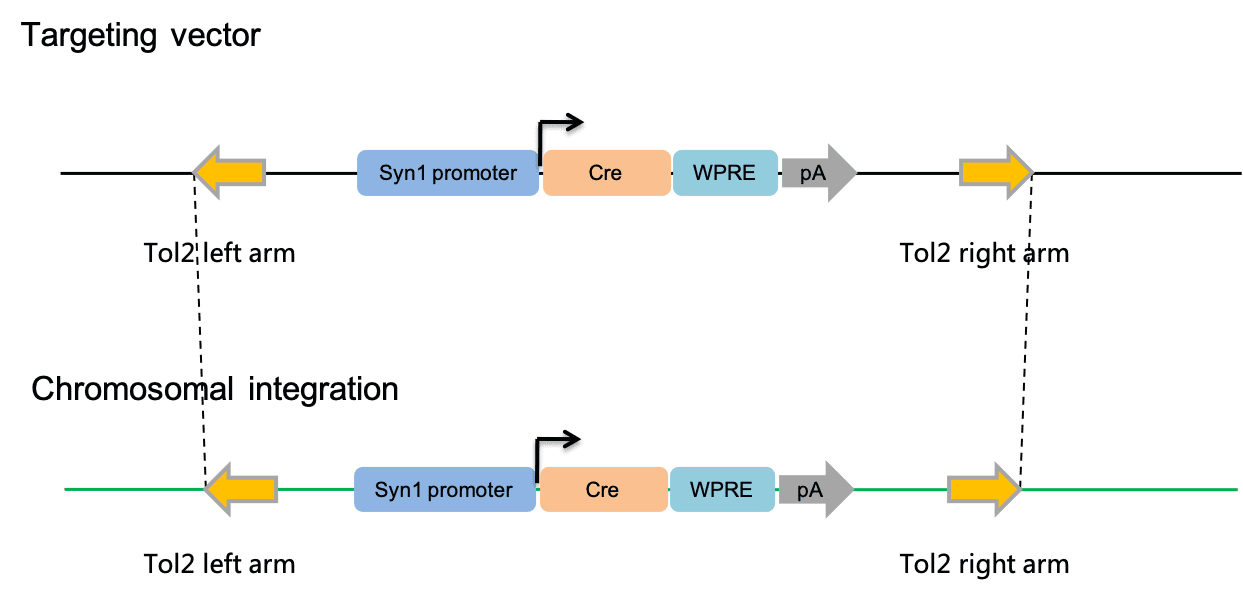Gene Targeting Strategies:
Biocytogen’s professional technology team and sales staff strive to help researchers achieve their animal model needs.
The gene targeting strategies that our customized models use include:
- Global Knockout
- Conditional Knockout
- Global Knockin
- Conditional Knockin
- Cre (ERT2) Knockin
- Point Mutation Knockin
- Tag and Reporter Gene Knockin
- Rosa26 Locus Knockin
- Tol2 Transgenic
Note: Selection marker for gene targeting is generally not required for animal model generation using CRISPR-based EGE™, in contrast to ESC/HR technology. The strategies shown below are based on traditional ESC/HR technology.
Global Knockout
In a global knockout (KO) mouse model, an exon of a target gene is globally deleted (EGE™ method) or replaced (ESC/HR) with a positive selection marker (Neomycin in most cases), thus inactivating the gene. In a global, or whole-body KO mice, the gene of interest in disrupted in every tissue.
Conditional Knockout
A conditional knockout (cKO) model is generated via Cre-LoxP/Flp-Frt recombination systems. The targeted fragment to be knocked out is flanked by LoxP (or Frt) elements. Floxed mice are then bred with tissue-specific Cre or Flp mice, and sequences between the LoxP sites will be removed from the offspring’s genome in a tissue-specific pattern. LoxP fragments are typically inserted into the introns downstream of the ATG-containing exon, thereby removal of the flanked exon(s) will result in a frame-shift that disrupts protein expression.
Global Knockin
Global knockin mouse models introduce mutant or exogenous DNA sequences into a specific locus in the mouse genome. These models can mimic genetic diseases when mutation(s) are introduced, or monitor gene expression when genes are tagged with various proteins (e.g. EGFP, mRFP, mCherry, YFP, LacZ, and Flag).
Conditional Knockin
In a conditional knockin mouse model, mice containing a floxed (or conditional) allele are crossed with Cre-expressing mice, allowing for tissue-specific expression of any foreign gene.
Cre (ERT2) Inducible Mouse Model
The Cre recombinase protein mediates a tissue specific deletion of DNA fragments that are flanked by loxP sites. Therefore, the Cre mouse model allows tissue specific gene knockout based on the promoter driving Cre expression. The ERT2 sequence is an estrogen receptor targeting motif, whose nuclear translocation and activity are controlled by estrogen receptor modulators. Thus, administration of estrogen receptor modulators enables temporal, or inducible, control of Cre activity and ultimately gene deletion.
Point Mutation Knockin
Conventional Point Mutation
A conventional point mutation mouse model is a knockin mouse line in which one or more nucleotides in the mouse genome are substituted by variant nucleotides. This can result in either an in-frame amino acid change within a given protein sequence, or a frameshift mutation. Knockin point mutation mouse models are widely used to study the roles of particular nucleotides or amino acids within proteins, which is directly applicable for studying human genetic diseases.
Conditional Point Mutation
A conditional point mutation mouse model introduces a point mutation when certain conditions are met. In the gene targeting strategy below, when Cre recombinase is present, a point mutation will be introduced tissue specifically via Cre activity. There are two major design strategies illustrated below.
Conditional Point KI by Double LoxP (Flex)
Conditional Point KI by Minigene
Tag and Reporter Gene Knockin
Genes tagged with EGFP, YFP, LacZ, Flag, mCherry and other sequences are useful for monitoring gene expression. Reporter gene mouse models are used to construct phylogenetic trees for cell development studies. Replacement of an endogenous gene with a reporter can simultaneously achieve gene knockout and knockin in the same mouse model.
Rosa26 Locus Knockin
Traditional transgenic mouse models are generated via pronuclear injection of a plasmid, where many different founders can be obtained. Experimental results from different founders can vary and not be reproducible due to the differences in integration copy number and loci. Currently, most researchers use site-specific integration strategies to build gene edited mouse models. Rosa26 is the most commonly used “safe harbor” locus because Rosa26 encodes a nonessential nuclear RNA expressed in almost all tissues. Conditional expression of an exogenous gene will result when a LoxP-3XSTOP-LoxP sequence is inserted upstream of the exogenous sequence at the Rosa26 locus, and this model is crossed with a Cre deleter. Examples of additional safe harbor loci include H11 and TIGRE.
Tol2 Transgenic
The Tol2 mouse model allows generation of transgenic mice utilizing Tol2 transposase activity. The Tol2 transposon system not only can increase the gene integration rate, but also has the inclination to integrate foreign genes into AT rich regions.



